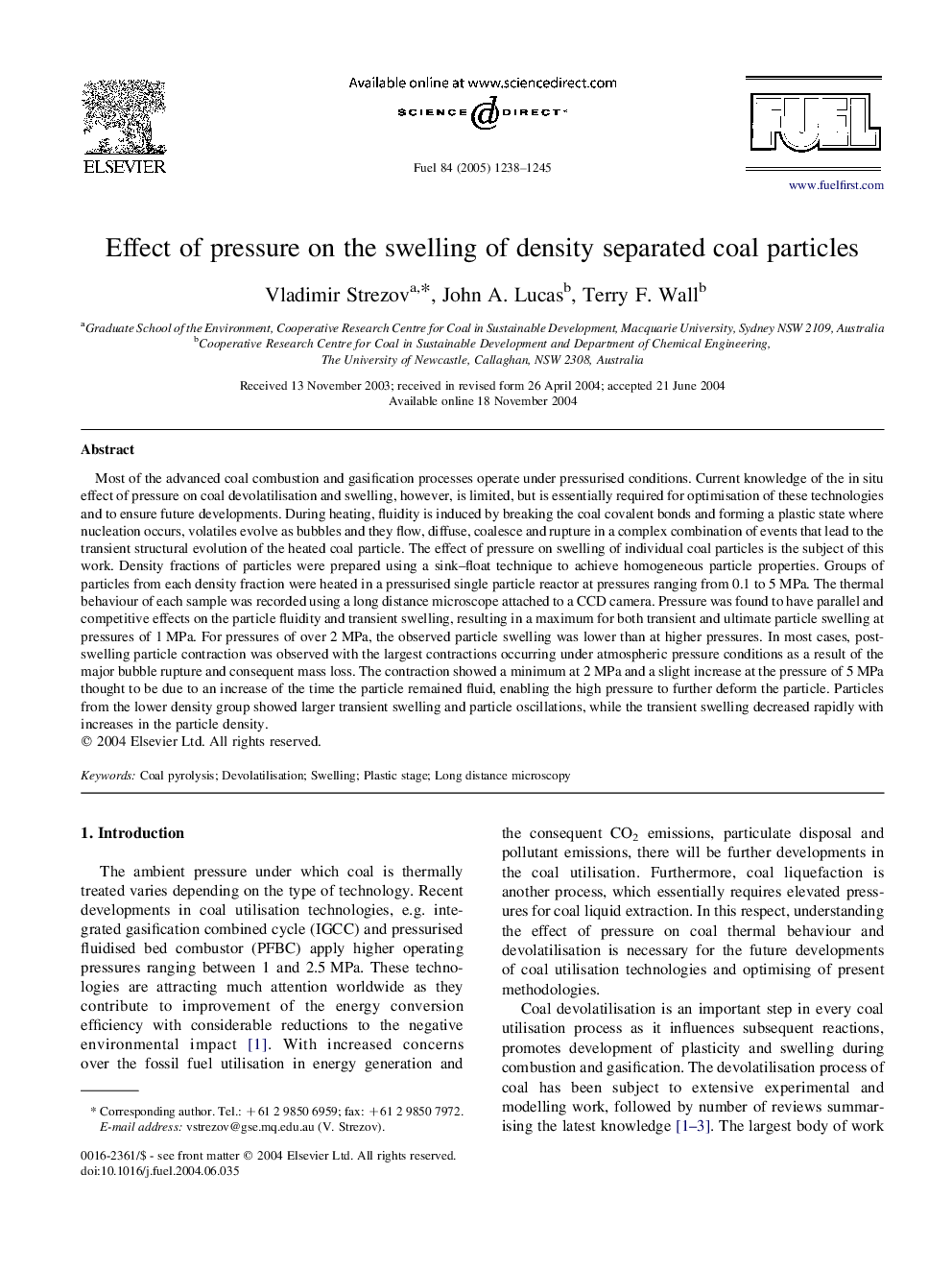| کد مقاله | کد نشریه | سال انتشار | مقاله انگلیسی | نسخه تمام متن |
|---|---|---|---|---|
| 10273449 | 461276 | 2005 | 8 صفحه PDF | دانلود رایگان |
عنوان انگلیسی مقاله ISI
Effect of pressure on the swelling of density separated coal particles
دانلود مقاله + سفارش ترجمه
دانلود مقاله ISI انگلیسی
رایگان برای ایرانیان
موضوعات مرتبط
مهندسی و علوم پایه
مهندسی شیمی
مهندسی شیمی (عمومی)
پیش نمایش صفحه اول مقاله

چکیده انگلیسی
Most of the advanced coal combustion and gasification processes operate under pressurised conditions. Current knowledge of the in situ effect of pressure on coal devolatilisation and swelling, however, is limited, but is essentially required for optimisation of these technologies and to ensure future developments. During heating, fluidity is induced by breaking the coal covalent bonds and forming a plastic state where nucleation occurs, volatiles evolve as bubbles and they flow, diffuse, coalesce and rupture in a complex combination of events that lead to the transient structural evolution of the heated coal particle. The effect of pressure on swelling of individual coal particles is the subject of this work. Density fractions of particles were prepared using a sink-float technique to achieve homogeneous particle properties. Groups of particles from each density fraction were heated in a pressurised single particle reactor at pressures ranging from 0.1 to 5Â MPa. The thermal behaviour of each sample was recorded using a long distance microscope attached to a CCD camera. Pressure was found to have parallel and competitive effects on the particle fluidity and transient swelling, resulting in a maximum for both transient and ultimate particle swelling at pressures of 1Â MPa. For pressures of over 2Â MPa, the observed particle swelling was lower than at higher pressures. In most cases, post-swelling particle contraction was observed with the largest contractions occurring under atmospheric pressure conditions as a result of the major bubble rupture and consequent mass loss. The contraction showed a minimum at 2Â MPa and a slight increase at the pressure of 5Â MPa thought to be due to an increase of the time the particle remained fluid, enabling the high pressure to further deform the particle. Particles from the lower density group showed larger transient swelling and particle oscillations, while the transient swelling decreased rapidly with increases in the particle density.
ناشر
Database: Elsevier - ScienceDirect (ساینس دایرکت)
Journal: Fuel - Volume 84, Issue 10, July 2005, Pages 1238-1245
Journal: Fuel - Volume 84, Issue 10, July 2005, Pages 1238-1245
نویسندگان
Vladimir Strezov, John A. Lucas, Terry F. Wall,